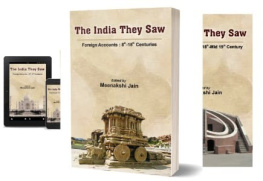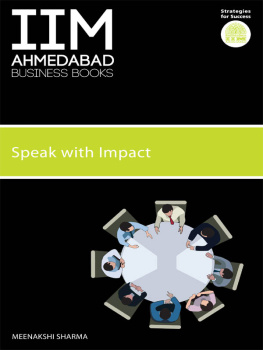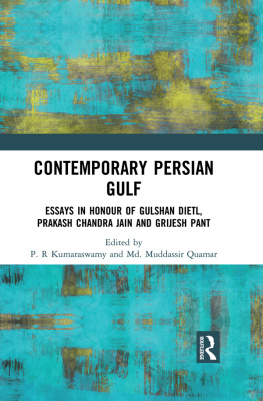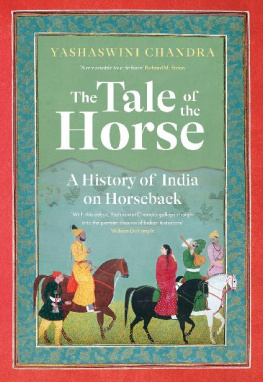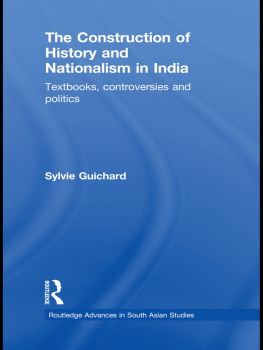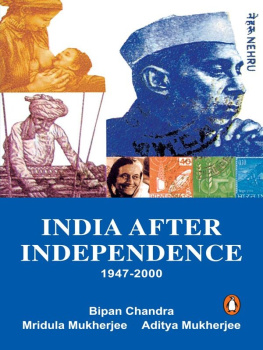Meenakshi Jain - Flawed Narratives History in the old NCERT Textbooks A random survey of Satish Chandra’s ‘Medieval India’
Here you can read online Meenakshi Jain - Flawed Narratives History in the old NCERT Textbooks A random survey of Satish Chandra’s ‘Medieval India’ full text of the book (entire story) in english for free. Download pdf and epub, get meaning, cover and reviews about this ebook. year: 2020, genre: Religion. Description of the work, (preface) as well as reviews are available. Best literature library LitArk.com created for fans of good reading and offers a wide selection of genres:
Romance novel
Science fiction
Adventure
Detective
Science
History
Home and family
Prose
Art
Politics
Computer
Non-fiction
Religion
Business
Children
Humor
Choose a favorite category and find really read worthwhile books. Enjoy immersion in the world of imagination, feel the emotions of the characters or learn something new for yourself, make an fascinating discovery.
- Book:Flawed Narratives History in the old NCERT Textbooks A random survey of Satish Chandra’s ‘Medieval India’
- Author:
- Genre:
- Year:2020
- Rating:5 / 5
- Favourites:Add to favourites
- Your mark:
- 100
- 1
- 2
- 3
- 4
- 5
Flawed Narratives History in the old NCERT Textbooks A random survey of Satish Chandra’s ‘Medieval India’: summary, description and annotation
We offer to read an annotation, description, summary or preface (depends on what the author of the book "Flawed Narratives History in the old NCERT Textbooks A random survey of Satish Chandra’s ‘Medieval India’" wrote himself). If you haven't found the necessary information about the book — write in the comments, we will try to find it.
Meenakshi Jain: author's other books
Who wrote Flawed Narratives History in the old NCERT Textbooks A random survey of Satish Chandra’s ‘Medieval India’? Find out the surname, the name of the author of the book and a list of all author's works by series.
Flawed Narratives History in the old NCERT Textbooks A random survey of Satish Chandra’s ‘Medieval India’ — read online for free the complete book (whole text) full work
Below is the text of the book, divided by pages. System saving the place of the last page read, allows you to conveniently read the book "Flawed Narratives History in the old NCERT Textbooks A random survey of Satish Chandra’s ‘Medieval India’" online for free, without having to search again every time where you left off. Put a bookmark, and you can go to the page where you finished reading at any time.
Font size:
Interval:
Bookmark:

INTRODUCTION
I would not care whether truth is pleasant or unpleasant, and in consonance with or opposed to current views. I would not mind in the least whether truth is, or is not, a blow to the glory of my country. If necessary, I shall bear in patience the ridicule and slander of friends and society for the sake of preaching truth. But still I shall seek truth, understand truth, and accept truth. This should be the firm resolve of a historian.
- Sir Jadunath Sarkar
With hindsight, it must be conceded that the NCERTs decision to discontinue textbooks authored by stalwarts of the Marxist school of historiography has triggered a veritable shift in the countrys intellectual template. And it was probably apprehending precisely such a fallout that leftist scholars had mounted a campaign of unprecedented ferocity to stall the new textbooks, even going to the extent of having sympathizers file a case in the Supreme Court against NCERTs proposed curriculum revision.
Strangely, no one bothered to ask why scholars of hitherto unquestionable eminence were so perturbed at being dislodged from schoolrooms, when their status, expertise and dominance remained unchallenged at the university level, where they were also more likely to encounter students who could appreciate the finer points of their scholarship. Perhaps since these scholars were, above all, purveyors of an ideology, the indoctrination of young minds from a primary stage itself was crucial to their agenda. That is why they had in the first instance prepared history primers, which were for decades rammed down the throats of helpless school children.
The medieval era of Indian history was the special focus of Marxist interest. Their contribution to the study and proper appreciation of this period was not entirely a negative development. To the extent that Marxist methodology lays special stress on the role of material forces in the shaping of history, they were able to make a significant contribution in highlighting the exploitative nature of the state under Sultanate and Mughal rulers, who appropriated the bulk of the agrarian produce, leaving the peasants in abject poverty.
But Marxist methodology in India is not recognized for its emphasis on economic determinism alone. It is associated with an active hostility to Indias native civilization and its achievements. It is noted for its blatant bias towards the Islamic advent that commenced in this period. Non-partisan scholars describe the Islamic thrust into the sub-continent as one of the most prolonged instances of cultural encounter in world history, and accept that notwithstanding the peaceful entry of Arab traders, a substantial part of Muslim settlement was achieved by conquest. From a perusal of standard secondary works alone, J. F. Richards has noted 90 instances of military conflict between the first Arab assault on Sind and the commencement of Alauddin Khaljis Deccan campaigns. (J. F. Richards, Power, Administration and Finance in Mughal India, Variorum, 1993). He concludes that an examination of primary sources would reveal many more such incidents. And yet, it has been an endeavour of Indian Marxists to negate this history of sustained resistance of Indians to Islamic incursions.
Further, they have sought to underplay the Islamic abhorrence of idolatry and polytheism and its assault on the sacred spaces of this land. Though the numerical superiority of Hindus compelled the invaders to grant them the status of dhimmis, the issue was too complex to be so resolved, and continued to exercise the Muslim mind throughout these centuries. Yohanan Friedmann has observed that the conciliatory trend in Indian Islam was always weaker than the orthodox one, and the few rulers who adopted it failed to inspire their successors (Islamic Thought in Relation to the Indian Context, in Richard M. Eaton ed., Indias Islamic Traditions, 711-1750, Oxford University Press, 2003).
Effacing the harshness of Islamic rule in India has been the primary objective of Indian Marxist historians. Even rulers of the notoriety such as Mahmud of Ghazni and Aurangzeb have been recipients of their kind benevolence. R. C. Majumdar has drawn attention to a typical, though not so well-known, case of Marxist intellectual jugglery. A Comprehensive History of India ( vol. v), published under the auspices of the Indian History Congress, he says, eulogizes the Bengal ruler Husain Shah, for his patronage of Bengali writers and Vaishnava saints, and asserts that the creative genius of the people reached its zenith under him. The truth however, Majumdar states, is that Chandidas, the greatest Vaishnava poet, preceded Husain Shah, and the two poets of distinction who lived in his reign, enjoyed no royal favours.
Further, the Vaishnava leader, Chaitanya had no connection whatsoever with the Bengal Sultan. In fact after he became a sannyasi, Chaitanya spent almost twenty years in exile in the Hindu kingdom of Orissa. When he once visited a locality near the residence of Husain Shah, many people in Gauda feared for his safety and begged him to depart. Contemporary Vaishnava literature attests to the hostility of the Qazi of Navadvip who even prohibited kirtans . And yet in defiance of such damning evidence, A Comprehensive History of India has no qualms in declaring that it is almost impossible to conceive of the rise and progress of Vaishnavism or the development of Bengali literature at this period without recalling to mind the tolerant and enlightened rule of the Muslim lord of Gaur.
Such double speak forms the leitmotif of Marxist literature on medieval India. The Turkish invasions are glorified for effecting the political unification of India, and ending her alleged isolation, while Mughal rule is presented as the countrys second classical age.
Notwithstanding lofty declarations about free debate, Indian Marxists have, in classic Soviet style, relied heavily on state patronage and control of state-sponsored institutions to disseminate their version of history. Satish Chandras Medieval India (NCERT 2000) was part of the Marxist offensive at the school level. A brief critique of the work is hereby presented, with a view to explain to the general reader the objections that non-Marxists have to Marxist historiography, and to share a larger concern for veracity and objectivity in the presentation of the past, howsoever unpalatable the past may be. Merely labeling such endeavors as saffronisation cannot wish away the paramount question that confronts historians today: Should history be an honest record of the past, or should it sacrifice truth to be Secular?
It has been said that history is essentially the story of civilizational memory. That has certainly been the case in India. Both communities which constitute Hindus and Muslims today, have varying memories of their historical journey. A Marxist dictate on inter-community amity in medieval India has abjectly failed to alter civilizational memories. The gulf between the two communities even at the village level has been poignantly brought out by a Bengali writer who notes:
The proud descendants of the Aryas, who propounded the six systems of philosophy, taught these to their pupils for seven hundred years after the advent of the Muslims, but never cared to know anything of the wonderful philosophical systems taught by the Maulavis in the Madrasas of the neighbouring village. The Muslim Maulanas, who did not hesitate to teach with delight the non-Islamic doctrines of Aristotle all their lives, never cared to inquire what was being taught in the neighbouring Chatuspathis. What is still most strange is that while the Muslim doctors read the Arabic translations of the medical treatises of Charaka and Susruta, they never knew that the original treatises were being taught in the tol of the neighbouring village. On the other hand, the Hindu authors of medical treatises, to the best of my knowledge, never cared to know anything or take any advantage of the Yunani system. It is often urged that Chaitanya sought to reconcile (or harmonise) the religious scriptures of the Hindus and Muslims, but I know nothing of it. So far as I know, the chief object of Chaitanya was to reform the Hindu society. The Muslims rulers, particularly the Mughal Emperors, invited to their courts, poets, scholars, philosophers and religious men from Iran and Turan. But the Hindus never profited in any way from these learned foreigners who had not established any contact with the Hindus (quoted in R. C. Majumdar, History of Mediaeval Bengal , G. Bharadwaj and Co. 1973).
Font size:
Interval:
Bookmark:
Similar books «Flawed Narratives History in the old NCERT Textbooks A random survey of Satish Chandra’s ‘Medieval India’»
Look at similar books to Flawed Narratives History in the old NCERT Textbooks A random survey of Satish Chandra’s ‘Medieval India’. We have selected literature similar in name and meaning in the hope of providing readers with more options to find new, interesting, not yet read works.
Discussion, reviews of the book Flawed Narratives History in the old NCERT Textbooks A random survey of Satish Chandra’s ‘Medieval India’ and just readers' own opinions. Leave your comments, write what you think about the work, its meaning or the main characters. Specify what exactly you liked and what you didn't like, and why you think so.


